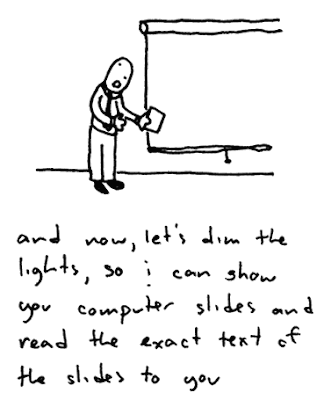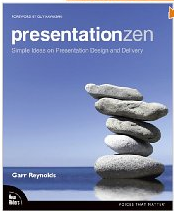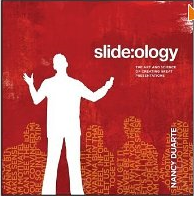
On the Bright Side
Big Lots Security System
Salt Love
 What started as a curiosity is now starting to get serious. Last Christmas, I ordered two salt sampler sets from Salistry.com... This was a great way to taste some interesting, different salts from around the world and test how they pair with different foods. Well, things haven't been the same since and, lest we spend a lot more money on replacing the little, tiny, now-empty boxes of flavored salt that have become staples with our meals, it is time to "get down to brass tacks" (where the hell did that saying come from, anyway?) and make our own.
What started as a curiosity is now starting to get serious. Last Christmas, I ordered two salt sampler sets from Salistry.com... This was a great way to taste some interesting, different salts from around the world and test how they pair with different foods. Well, things haven't been the same since and, lest we spend a lot more money on replacing the little, tiny, now-empty boxes of flavored salt that have become staples with our meals, it is time to "get down to brass tacks" (where the hell did that saying come from, anyway?) and make our own.So to begin: the hands-down favorite with our weekend sunny side/over-easy/soft-boiled egg orgies has been lemon thyme salt. Thanks to chef/food blogger Sophia Lindop, here is a simple recipe for us to try and modify (soon!).
Lemon Infused Maldon Sea Salt
Quick and oh so easy!
Ingredients
Maldon Salt
Lemons
Method
1. Use a microplane grater to make the rind.
2. Allow the lemon or lime rind to dry a little so as to not add moisture to the salt.
3. Infuse Maldon salt with the rind, using proportions that work for you - I love lemon rind, so I used quite a bit. Mix well and store.
Use on salads, on lamb, beef or chicken, in pasta, with risotto and more. Just remember that lemon rind turns bitter when cooked for too long, so add at the last minute. This is also a great gift idea! Hope you enjoy it as much as we are!
PowerPoint Superheroes
 Bad PowerPoint is not the fault of the presentation tool.
Bad PowerPoint is not the fault of the presentation tool.It is the fault of the presenter and/or designer.
In my professional endeavors as an instructional designer, I always strive to provide clients with something creative and fresh (yet practical), especially when it comes to PowerPoint! Sadly, most prefer that I remove the fun part (that keeps things interesting), in favor of straight, oftentimes exhaustive screen text.
But never fear. There is help for lousy PowerPoint design!
These are my presentation "bibles," if you will:

Presentation Zen: Simple Ideas on Presentation Design & Delivery
by Garr Reynolds
Buy it here on Amazon

Slide:ology: The Art and Science of
Creating Great Presentations
by Nancy Duarte
Buy it here on Amazon
Do your audience the hugest favor ever and read these books! And if you are too busy/lazy to do that, hire me.
WSJ: Speaking Truth to PowerPoint
 Wall Street Journal | July 31, 2009
Wall Street Journal | July 31, 2009Dunkin’ Donuts insists that “America runs on Dunkin’.” Actually, America runs on PowerPoint. Slide, by slide, by slide.
But maybe we shouldn’t. Maybe—while we reconsider how we bank, manufacture cars, emit carbon and visit the doctor—we should also rethink how we PowerPoint. Maybe cutting the cord is change you can believe in.
This is the bold message trumpeted today by a few anti-PowerPointers—“SourPointers,” let’s call them. Do they stand a chance?
PowerPoint—the Microsoft program for creating slide presentations—is ubiquitous in boardrooms, government offices, military bases and universities. Like Xerox, it is a brand name-cum-archetype. Microsoft estimates that there are 500 million PowerPoint users world-wide.
Standing athwart these legions is José Bowen, a SourPointer who serves as dean of Southern Methodist University’s School of the Arts. In addition to being a professor of music, Mr. Bowen is a jazz musician who has played with Dizzy Gillespie and written for Jerry Garcia. So he knows performance. And he insists that PowerPoint undermines it, serving as a crutch for professors and lulling students into boredom and passivity. He encourages his SMU colleagues not to use the program in lectures—to “teach naked,” as he says.
T.X. Hammes brings a quite different background to the ranks of the SourPointers. A retired colonel in the Marine Corps and an expert on counterinsurgency warfare, Col. Hammes wrote in this month’s Armed Forces Journal that PowerPoint “is actively hostile to thoughtful decision-making.”
Throughout the Defense Department and military, he writes, the agenda is driven by vague, oversimplified and easily misunderstood bullet points. While decision-makers once read and slept on “succinct two- or three-page summaries of key issues,” today they are harried by the pace of PowerPoint and “are making more decisions with less preparation and less time for thought,” Col. Hammes charges.
As Newton stood on the shoulders of giants, Mr. Bowen, Col. Hammes and other SourPointers are propped on the shoulders of Edward Tufte. A renowned design guru and former Yale University professor, Mr. Tufte travels the country giving six-hour lectures that people in the fields of advertising, programming and publishing pay hundreds of dollars to attend. Upending PowerPoint is a chief goal of his work.
Mr. Tufte’s case against PowerPoint is lengthy, detailed and not subtle. The program is evil and wasteful, he wrote in 2003—a “prankish conspiracy against evidence and thought.” On the cover of his self-published pamphlet, “The Cognitive Style of PowerPoint,” Mr. Tufte depicts Josef Stalin overlooking a large, rigid Soviet military parade and declaring “Next slide, please.”
When the Columbia space-shuttle disaster occurred over Texas in early 2003, Mr. Tufte fingered PowerPoint as a culprit. He argued that shuttle information vital to NASA analysts had been shunted to the bottom of a typically cluttered PowerPoint slide.
And he wasn’t just demonstrating a critic’s overzealous imagination—he was right. As the Columbia Accident Investigation Board concluded: “It is easy to understand how a senior manager might read this PowerPoint slide”—the one Mr. Tufte singled out—“and not realize that it addresses a life-threatening situation.” The board called PowerPoint use “endemic” and “an illustration of the problematic methods of technical communication at NASA.”
Brands have been destroyed by far less weighty associations. And yet the PowerPoint juggernaut rolls on. The reason is not just PowerPoint users’ laziness, or the software’s many attractive features. It’s that PowerPointers and SourPointers offer different answers to a basic question: Are poor slide presentations the fault of the presentation tool or the presenter?
“Any general opposition to PowerPoint is just dumb,” argued Harvard psychologist Steven Pinker in an email. “It’s like denouncing lectures—before there were awful PowerPoint presentations, there were awful scripted lectures, unscripted lectures, slide shows, chalk talks, and so on.”
Computer programming pioneer Larry Wall has argued similarly, stating: “I do quarrel with logic that says ‘Stupid people are associated with X, therefore X is stupid.’ Stupid people are associated with everything.”
So perhaps all we can say is, “next slide.” And please pass the doughnuts.
Mr. Feith is a Robert L. Bartley Fellow at the Journal this summer.Printed in The Wall Street Journal, page W11
















